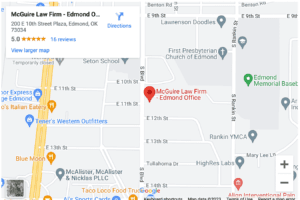Causation

Causation is the third legal element a plaintiff must prove in a personal injury lawsuit.
The idea of causation can be difficult for a victim to understand. For the victim, there is no doubt that the other party caused their injury.
However, a plaintiff must prove legal causation and establish a relationship between the defendant’s acts and the victim’s injuries. If a plaintiff cannot prove causation, the jury is likely to rule in favor of the defendant.
What is Causation?
In legal terms, causation refers to the cause-and-effect between an action or event and the result of that action or event. It describes why something happened and creates a chain of causation for a negligence claim.
It is not enough for a victim to prove that the other party was negligent for a personal injury case. The victim must prove that the other party’s negligence caused the victim’s injuries.
For example, if a doctor fails to perform a medical test that could have diagnosed an illness that would likely result in death if not treated, the doctor was negligent in failing to perform a required test. However, if your loved one’s death was due to a slip and fall accident, the doctor is not guilty of malpractice because his negligence was not the cause of your loved one’s death.
Two Different Types of Cause for Negligence Cases
In negligence law, there are two different types of causation: 1) cause in fact; and 2) proximate. In a personal injury case, you must prove both types of cause to win your case.
Cause in Fact
Cause in fact is also referred to as the “actual cause”. You must prove that the defendant’s actions were a direct cause of your injuries and damages. For example, a person running a red light and slamming into another vehicle is usually a direct cause of the injuries sustained by people in the other vehicle. That would be the cause in fact.
Proximate Cause
Proximate cause is different. It asks whether a person should have reasonably known their actions could lead to a person’s injuries. Proximate cause is different from actual cause or common sense. It is more of an objective causation because it is based on what a “reasonable” person would have known. For example, someone should reasonably foresee that driving under the influence could increase the risk of another person being injured in a DUI accident.
A property owner should reasonably foresee a child accidentally drowning if the area around a pool is not secured to prevent children from wandering into the area.
Individuals are not usually held liable if they could not have reasonably foreseen a link between the injuries and their conduct. They are also not liable for unpredictable events that were not within their control.
For example, a hotel owner fails to provide sufficient lighting to protect guests as they go to their rooms using the stairs on the outside of the building. The owner could be liable if a guest falls and is injured while climbing the steps.
However, if the owner provides sufficient lighting and security, but someone is injured because they are intoxicated or another party attacks them, the owner may not be liable for the injuries. The owner could not foresee all intervening events that could lead to an injury. Intervening events and unforeseeable events usually break the chain of causation required to prove a negligence claim.
Damages Included in a Personal Injury Lawsuit
When a plaintiff successfully proves the chain of causation between a defendant’s conduct and the plaintiff’s injuries, the plaintiff is entitled to compensation for damages.
Damages in a personal injury lawsuit include both economic damages and non-economic damages.
If another party caused your injury, you could be entitled to compensation for:
- Loss of income and benefits, including decreases in earning potential
- Medical bills and costs of personal care
- Pain and suffering damages, including physical pain, emotional distress, and mental anguish
- Scarring and disfigurement
- Disabilities and permanent impairment
- Decrease in the person’s quality of life or enjoyment of life
How much a personal case is worth depends on several factors, including whether the person was partially at fault for the cause of their injuries. If a jury finds a plaintiff contributed to the cause of an accident, the plaintiff’s compensation is reduced by their percentage of blame for the accident.
Contact Our Oklahoma Personal Injury Lawyer for a Free Consultation
The idea of causation can be challenging to understand. If you are facing any personal injury case, like car or truck accidents, our Oklahoma personal injury lawyers can explain how causation applies in your case during a free consultation. Receive an honest assessment of your claim and get answers to your questions free of charge.

